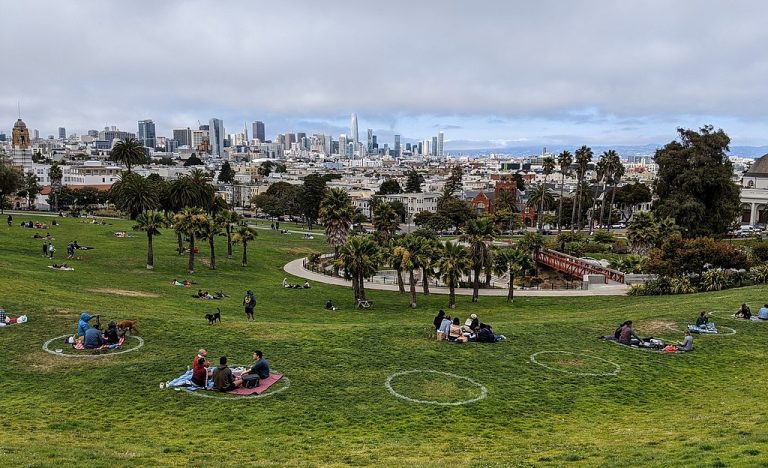Published on September 15, 2020

On a Friday in early March, Jennifer Pearson looked around her library in Lewisburg, Tennessee.
“The library was full of older people,” Pearson, the library’s director, said. “I thought, if I don’t close this space, they will never stop coming to it, so I have to close it, for their good and for my staff.”
“In my rural area, and in lots of rural areas, this is the only thing they have,” said Pearson. “There aren’t other public spaces where you can go and just sit and be all day without having to buy anything or get in trouble for loitering.”
“For at least 15 to 20 years, libraries have been evolving into community hubs, places to come and stay and have meetings and meet your friends and come on in and stay awhile,” said Pearson, who is also president of the Association for Small and Rural Libraries. “We can’t be that right now.”
In New York, parking spaces are handed over to outdoor dining, and some blocks have closed altogether. Bike lanes have popped up all around the country. Streets have been shut to cars, and some cities are going to make the closures permanent, like Seattle, which has made 20 miles of streets pedestrian and cyclist only.
“Under the pandemic, people care much more and are appreciating much more the parts of open space that we have,” Jeff Hou, the director of the Urban Commons Lab at the University of Washington, told Insider. “They realize how important these amenities are for our physical and mental well-being. There’s a new awareness and consciousness about parks and open space that we sometimes take for granted.”
But not all kinds of public spaces are able to be appreciated in the same ways. Enclosed public spaces like libraries and trains face significant challenges due to socially distancing regulations, and ongoing, warranted fears about indoor spread of the virus.
And race and class-based disparities in access to and amenability of public space in the US have manifested in a variety of ways: when law enforcement disproportionately enforces social distancing regulations on people of color; in transit systems upon which non-white and lower income people rely; and in the shuttering of libraries and public restrooms, used heavily by homeless populations in cities and towns across the country.
Much remains to be seen about how the pandemic will reshape public space in America, and researchers say it’s far too early to draw conclusions. But it’s clear that the future of public space post-pandemic will be intricately linked to the disparities and inequities along race and class-based lines that have been endemic both to the pandemic and, historically, to the spaces themselves.
Continue reading at Insider.
Originally written by Sophie Haigney for Insider.